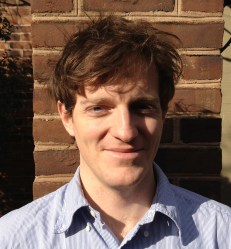The twenty-first annual Environmental Film Festival in the Nation’s Capital kicks off this week in Washington, DC. The event, which runs from March 12 – 24, will screen 190 films that celebrate our connection with the natural world—from an exploration of the Amazon to a kayaking trip down the infamous Los Angeles River. I caught up with Peter O’Brien, the Festival’s executive director, who answered a few questions via e-mail.
The 2012 Festival was one of the most ambitious to date—over a hundred films were screened—but this year’s event looks even bigger. What are some of the highlights?

The 2013 Festival is another ambitious undertaking! We’ve got a vibrant and diverse program of films and, this year, a special focus on rivers and watersheds throughout the world. Of the Festival’s 190 films, 110 will screen as premiers, including 18 world premiers and 15 U.S. premiers. And the scope is global: 85 international films will screen, representing 50 different countries.
Some specific highlights include A River Changes Course, about the effects of modernity on the people and environment of the Tonle Sap River in Cambodia; the world premiere of Hot Water, a hard-hitting look at the legacy of contamination from uranium mines in the western U.S.; the world premiere of The Ends of the Earth, a celebration of the magnificent and remote Alaska Peninsula and Katmai National Park; and The Fruit Hunters, a lively exploration of the world’s rarest fruits and the people obsessed with finding them.
Why is it important to keep offering this event in Washington? And why keep doing it?
Our mission is to advance public understanding of the environment through the power of film, and we feel that we are continuing to accomplish this as our audiences grow each year. Our surveys show large numbers of new attendees every season, as well as many returning fans.
Washington is also an ideal place to pursue the collaborations and partnerships that make the Environmental Film Festival unique. This March, over 100 partners, including museums, embassies, universities, commercial theaters, churches, schools, community centers, and environmental NGOs, are joining us to make the 2013 Festival a reality and a true community-wide event.
What’s your favorite part of putting the Festival on every year?
The films we consider deal with every imaginable environmental subject, and they represent the work of dedicated and passionate filmmakers. To watch them is an ongoing education, and my favorite aspect of this work. Festival films are also frequently at the cutting edge of the national public discourse, and debates about things like fracking, mountaintop removal mining, tar sands development, and climate change—to name just a few—have all been significantly informed by films we’ve featured over the years.
You screen a tremendous number of films. What were some of the favorites last year?
There were many favorites in last year’s lineup. The Well is a beautiful film about the ancient singing wells of Ethiopia. The Big Fix investigates the dire consequences of BP’s oil spill in the Gulf. And Watershed, which we are actually showing again this year as part of our rivers theme, is a clarion call to protect the Colorado River and restore its delta. Giving that film its world premiere was definitely a highlight of the 2012 Festival.
What life experiences prepared you to run this massive and independent arts event?
My professional experience includes documentary film production work, and this certainly helps me understand the film world that is the basis of what we do. I had not worked at a festival before, and had to learn much on the job—so it’s helped me to have a deep interest in our films’ wide-ranging topics, and to enjoy working with outside groups and partners to create an event that enriches the cultural life of the city.



